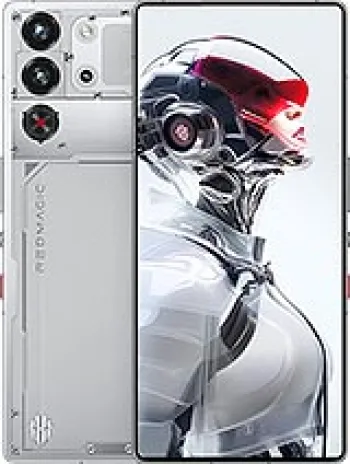
Overview of ZTE Zinger
The ZTE Zinger is a compact smartphone that was released in October 2014, targeting budget-conscious consumers. With its small size and basic features, it presented an affordable solution for individuals seeking a basic Android experience. Although it has since been discontinued, the ZTE Zinger still holds relevance for those interested in the evolution of budget-friendly smartphones.
Design and Build
The ZTE Zinger sports a modest design with dimensions of 117.6 x 62 x 12.2 mm and a lightweight profile of 110 g. Its plastic build comes with a micro-SIM slot, emphasizing its budget orientation. While the design might seem simplistic compared to modern standards, the black color gives it a classic and unobtrusive look.
Display
Equipped with a 3.5-inch TFT display, the ZTE Zinger delivers a resolution of 320 x 480 pixels with a 3:2 aspect ratio. The screen-to-body ratio stands at approximately 50%, indicative of larger bezels. With a pixel density of around 165 ppi, the visual experience is basic, suited for users who prioritize functionality over high-definition media consumption.
Performance
The ZTE Zinger is powered by a Qualcomm MSM8210 Snapdragon 200 chipset, featuring a dual-core 1.2 GHz Cortex-A7 CPU and an Adreno 302 GPU. This configuration, paired with 512MB of RAM, allows for basic multitasking and smooth operation of standard applications. While not equipped for high-performance gaming or intensive tasks, the Zinger comfortably handles essential smartphone functions.
Storage and Memory
This device comes with 4GB of internal storage, which can be expanded using a dedicated microSDHC slot. The inclusion of external storage capabilities is a significant advantage for a budget device, enabling users to store additional apps, files, and media without heavily relying on internal memory.
Camera
The ZTE Zinger features a single 2 MP rear camera, offering basic photography capabilities. While it may not cater to advanced photography needs, it suffices for capturing everyday moments. Notably, the device does not include a selfie camera, reflecting its focus on basic utility over multimedia features.
Operating System
The smartphone operates on Android 4.4.2 KitKat, an older version of the Android OS. Despite its age, KitKat provides a user-friendly interface with access to a wide array of apps and services available on the Google Play Store.
Network and Connectivity
In terms of network capabilities, the ZTE Zinger supports GSM and HSPA technologies. It can operate on 2G and 3G bands, offering decent connectivity for casual browsing and communication. For local connectivity, it includes Wi-Fi 802.11 b/g/n with Wi-Fi Direct and hotspot functionality, Bluetooth 4.0, GPS, microUSB 2.0, and an FM radio. However, it lacks NFC support, which is a common feature in newer smartphones.
Battery Life
Powering the device is a 1500 mAh removable Li-Ion battery. Although modest in capacity, it provides up to 192 hours of standby time and up to 6 hours of talk time on 3G, adequate for basic daily usage without frequent recharges.
Audio and Sound
The ZTE Zinger includes a loudspeaker and a 3.5mm headphone jack, allowing users to enjoy audio experiences, from calls to media playback, through external speakers or wired headphones.
Conclusion
In conclusion, although the ZTE Zinger has been discontinued, its significance lies in its role within the budget smartphone market of its time. It offers a no-frills Android experience with essential features suitable for users with basic telephony and connectivity needs. While technology has advanced, rendering many of its features obsolete by today's standards, the ZTE Zinger remains a noteworthy example of early affordable smartphones that paved the way for cost-effective mobile devices in emerging markets.
Key Features of ZTE Zinger
- Supports GSM / HSPA network technologies for wider connectivity.
- Lightweight and compact design with dimensions of 117.6 x 62 x 12.2 mm and weight of 110 g.
- 3.5-inch TFT display with 256K colors and a resolution of 320 x 480 pixels.
- Powered by Android 4.4.2 (KitKat) for a reliable user experience.
- Equipped with a Qualcomm Snapdragon 200 chipset and a Dual-core 1.2 GHz Cortex-A7 CPU.
- Expandable storage via microSDHC card slot for more space for apps and media.
- Includes essential connectivity features such as Wi-Fi, Bluetooth 4.0, and GPS.
- FM radio support for added entertainment options.
- Removable 1500 mAh battery providing up to 6 hours of talk time on 3G network.
Disadvantages of ZTE Zinger
- Low Resolution Display: The screen resolution of 320 x 480 pixels results in a low pixel density of approximately 165 ppi, leading to less sharp and clear visuals.
- Limited Internal Storage and RAM: With only 4GB of internal storage and 512MB RAM, the device may struggle with running multiple applications and storing media files.
- Poor Camera Quality: The device features a lone 2 MP main camera without any front-facing camera, leading to subpar photography performance.
- Lack of Front Camera: The absence of a selfie camera could be a significant drawback for users who value video calls and self-portraits.
- Outdated Operating System: The phone runs on Android 4.4.2 (KitKat), which is outdated and may not support the latest applications and features.
- No NFC Support: The lack of NFC could limit users from utilizing contactless payment and other NFC-based features.
- Short Battery Life: The 1500 mAh battery provides limited talk time (up to 6 hours on 3G), which may not be sufficient for heavy usage throughout the day.
- Discontinued Model: Being a discontinued product, the device might not receive further updates or support from the manufacturer.

View Also
More Phones
All Rights Reserved +14266 Phones © Mobilawy 2025

























